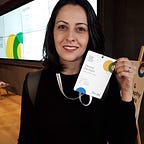Nurturing an engaged and proficient reader
“It takes a village to raise a child.”
Proverb attributed to African cultures
Who is responsible for teaching a kid how to read? That is an important question we all need to reflect about if we are genuinely interested in understanding how to nurture strategic and engaged readers, able to make sense of what they observe in all kinds of texts.
A thoughtful response comes from the educator Sterl Artley, cited in the first chapter of Reading for Understanding — Toward an R&D Program in Reading Comprehension: “every teacher is a teacher of reading”.
Considering that we read to learn, reading instruction should be interdisciplinary, integrated with content-area instruction. As it is presented in the report produced by the RAND Reading Study Group, “discipline-specific vocabulary words, text structures, methods, and perspectives involves acquiring both content knowledge and reading skills simultaneously.”
Comprehension is necessary to build knowledge in all subjects; it is one of the learning goals but also a prerequisite for learning.Therefore, texts in all subjects should be intentionally designed to improve learners’ reading proficiency, ensuring advanced literacy achievement over time. In other words, students would have much more opportunities to assimilate the necessary steps to comprehend a text if all readings offered in all subjects could be intentionally designed to meet this goal.
That way, there would be numerous occasions for them to experiment making connections to prior knowledge, summarizing, synthesizing, inquiring, discussing vocabulary, participating in high-quality discussions about texts etc.
This reflection leads me to the idea that any instructional model needs to be embraced by the whole school. But not only in the formal educational settings. All the community, libraries, makerspaces and also families are responsible for assisting learners as they become skilled readers.
This broadened net of support will ultimately provide the contextual factors that are necessary to build reading comprehension, including well-being, interest, equity and agency.
Schools should be responsible for raising awareness among all these stakeholders, explaining to them how crucial it is to get involved in any initiative focused on helping learners to become proficient and critical readers. There are plenty of reasons for that. Buehl reminds us, in Fostering Comprehension of Complex Texts, that reading comprehension is fundamental not only to learn during school years but mainly to be adequately prepared for life after school.
Being able to comprehend any text is a foundational skill to take informed decisions, fully participate in the democratic society, solve problems and develop new ideas and products. No wonder the Reading Framework for the 2026 National Assessment of Educational Progress (NAEP) proposes a new comprehension target to assess important dimensions of reading comprehension: Use and apply (besides the ones already incorporated in the test — Locate and recall, Integrate and interpret, and Critique and evaluate).
The document emphasizes that reading to take some action in the world outside of text reflects “the culmination of comprehension, in which understandings acquired during reading are used in new situations or applied in the development of novel ideas and products”.
It is hard to think how a learner will be able to achieve such a high level of proficiency and develop the strategic comprehension processes needed to make meaning of all texts without a really wide support. This is the only way for children to gain the confidence and motivation necessary to “build knowledge, enlarge experience, and broaden worldviews” (Buehl, 2014). So, a child’s sociocultural context matters a lot when we focus on her ability to read.
And, as the communication environment changes, media education can not be left out of this conversation — that’s how I see myself connected to the matter. Reading comprehension is a process that needs to be constructed and cultivated indefinitely. It’s a lifelong journey: as a child we develop beginning reading skills, and these skills need to be constantly deepened and mastered.
There will always be new challenges ahead. The crisis related to fake news and other types of disinformation made it clear to us that reading comprehension skills always need to be fostered.
We need to frequently ask ourselves if our understanding and practices of comprehension keep pace with the changing nature of text, with the more and more complex ways in which we all produce and share information and with the expanded meaning of authorship brought by the internet and mainly by social media.
I have no doubt that we are facing a very important mission that needs to be taken on by the entire community around the student. What can you do to encourage kids to be engaged and critical readers?
References:
Buehl, D. (2014). Fostering Comprehension of Complex Texts (Chapter 1 pages 3–11) in Classroom Strategies for Interactive Learning (4th Edition). International Literacy Association.
Duke, N.K. & Pearson, P. D. (2002). Effective practices for developing reading comprehension. In What Research Has to Say About Reading Instruction, 3rd edition. International Reading Association.
Hammond, Z. (2020). A Conversation about Instructional Equity with Zaretta Hammond. Collaborative Classroom. A blog post available at Collaborative Classroom.com
Hughes, Janette. M., Morrison, L. J., Kajamaa, A. & Kumpulainen, K. (2019). Makerspaces promoting students’ design thinking and collective knowledge creation: Examples from Canada and Finland. In A. Brooks, E. Brooks & C. Sylla (Eds.), Interactivity, Game Creation, Design, Learning, and Innovation (pp. 343–352). 7th EAI International Conference.
Noddings, N. (1995). Teaching themes of care. The Phi Delta Kappan, 76(9), 675–679.
Reading Framework for the 2026 NAEP.
Wen, W. & Castek, Jill (2020). Equity, literacies, and learning in technology-rich makerspaces. Handbook of Research on Integrating Digital Technology with Literacy Pedagogies.
Image: Pixabay
